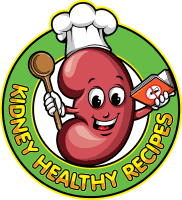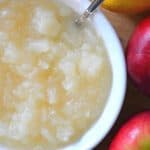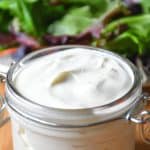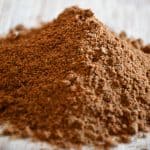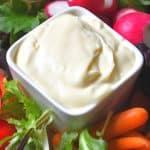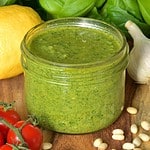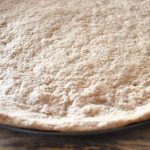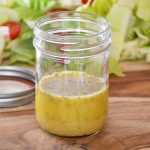Here’s my recipe for homemade low sodium pesto. It’s quick, easy, and tasty! This homemade pesto can be used in many ways and can be frozen for convenience.
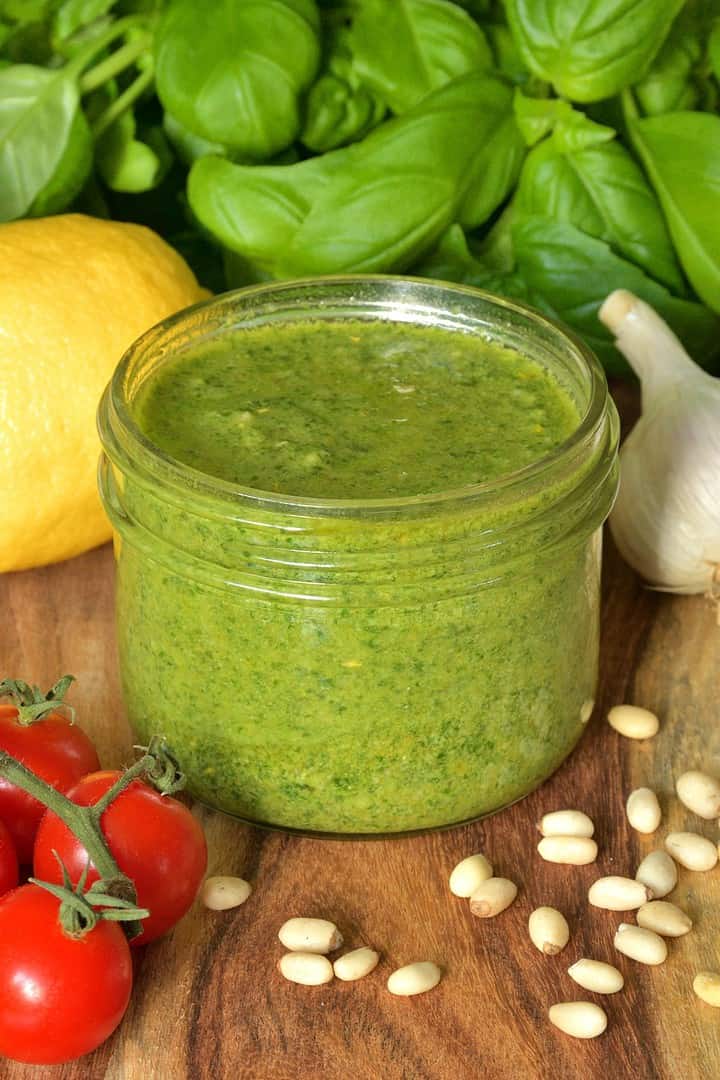
Kidney nutrition
This is one of the few recipes that I use salt. Without salt, I think this recipe would be very bland and therefore mostly useless. However, as you can see from the following nutrition facts, using salt doesn’t mean that this pesto can’t be low in sodium. The goal is to use as little as possible while still being able to get a tasty result.
I also consider it logical to use salt in this recipe because it’s a condiment I use in dishes that don’t contain salt otherwise.
Even though the goal is to reduce our sodium intake, a daily minimum is usually required for our bodies. To learn more about this topic, read this article on the low sodium diet.
Nutrition facts and claims
Here are the nutritional values and claims of this recipe.
For informational purposes only.
Low sodium pesto ingredients
Most of the ingredients used to make this recipe are common for making pesto. Using fresh, good quality ingredients in this low sodium pesto recipe is important to get a good result.
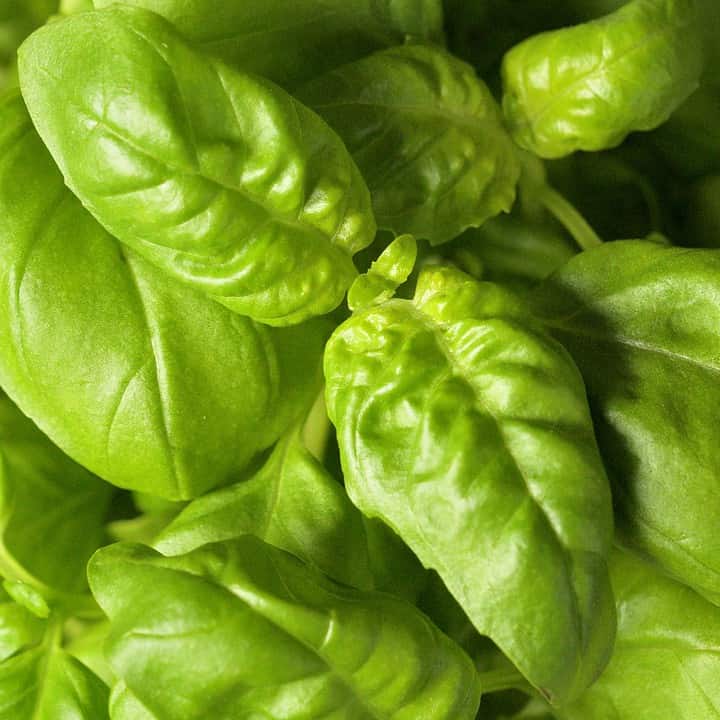
Fresh basil leaves
Basil leaves are one of the main ingredients in pesto. The fresher the leaves, the better the taste will be.
Olive oil
Olive oil is a common ingredient in the majority of pesto recipes. It gives a smooth texture and rich flavor to the low sodium pesto in addition to containing healthy fats.
Pine nuts
Pine nuts add texture to the pesto. However, pine nuts can be very expensive. To make low-sodium pesto, it is possible to omit them altogether or reduce the amount, for example by half, without additional adjustment if you prefer.
Garlic
The garlic cloves add a lot of flavor to the pesto. However, be careful about the size of the pods you use. The garlic should complement the flavor of the fresh basil and not overpower it. In this recipe, I use 2 cloves of garlic, but if you have very large cloves, only use one or even half a clove.
Nutritional yeast
Usually, pesto is made with Parmesan cheese. However, Parmesan cheese can contain a very high amount of sodium. To replace Parmesan cheese and thus reduce the sodium content by a lot, I use nutritional yeast.
Lemon juice
In this recipe, lemon juice is used to prevent oxidation of fresh basil. Without it, your pesto will turn brown.
Salt
As mentioned earlier in this recipe, I avoid using salt in my recipes, but it’s one of the exceptions that I think makes sense and is necessary to make a tasty homemade low sodium pesto.
However, a small amount goes a long way. You can adapt it to taste, but I personally don’t recommend using more salt than directed in this recipe.
How to use low sodium pesto
Low sodium pesto is a very versatile condiment that can be used in many ways. Here are some example on how to use it.
- Toss with freshly cooked whole wheat pasta
- Pair with baked and grilled fish
- Add to quiche, frittata and omelet
- Use to bake veggies in the oven
- Spread on bread to make sandwiches
- Stir in soup
- Make a low sodium salad dressing
- Topping savory waffles and pancakes
- Baking into bread
- Topping a pizza
Low sodium pesto variations
Like any other low sodium condiment recipes, there are endless ways of customizing this low sodium pesto. Here are some ideas.
4 ingredients pesto
You can make this recipe easier than it already is by using just 4 ingredients. You can use just basil, oil, nutritional yeast, and a little salt to make a tasty low-sodium pesto.
Toasted pine nuts and garlic cloves
For a different flavor profile, you can toast your garlic cloves and pine nuts for a few minutes in a pan lightly oiled with olive oil before tossing them in the food processor.
Basil and sun-dried tomato pesto
If you’re looking for a different taste, you can try adding unsalted sun-dried tomatoes to the food processor along with the other ingredients.
Pine nuts substitution
As mentioned earlier, pine nuts can be expensive. The good news is that you don’t need to use pine nuts to make low-sodium pesto. In fact, you can totally omit them. You can also replace them with other types of nuts like walnuts. The taste will be very similar.
Fresh basil substitution
In the summer, it’s easy to find fresh basil at a normal cost. But during the winter, if you don’t grow basil indoors, it can be expensive and hard to find.
However, you can make pesto without basil. For example, you can try arugula, spinach, kale, and many other leafy greens and fresh herbs.
Texture
If you prefer a thicker pesto, use less oil. On the contrary, if you prefer a more liquid pesto, add more. You can also use a little water.
Conservation
Homemade pesto can be stored in the refrigerator for up to 5 days. It can also be frozen for up to 3 months. For easy storage, you can freeze your pesto in an ice cube tray and put the frozen pesto cubes in an airtight bag.
More low sodium condiments
If you like this low sodium pesto, you might like these other low sodium condiments.
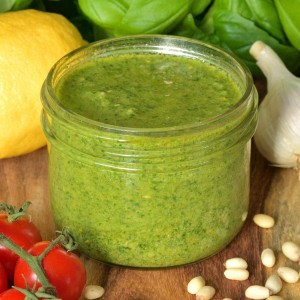
Low Sodium Pesto
INGREDIENTS
- 2 cups fresh basil leaves
- ½ cup olive oil
- ½ cup pine nuts
- 2 tbsp nutritional yeast
- 1 tbsp lemon juice
- 2 garlic cloves peeled
- ⅛ tsp salt (optional)
INSTRUCTIONS
- Combine all ingredients in a food processor and blend until desired consistency and adjust to taste if necessary.
- Store in the refrigerator in an airtight container or freeze in an ice cube tray.
NOTES
NUTRITION FACTS
For informational purposes only. Nutrition data is primarily calculated from the USDA National Database. Values may vary from accuracy of measurements, brands, nutritional data and more. All measurements are metric (1 cup = 250ml). Readers are encouraged to make their own calculations.
